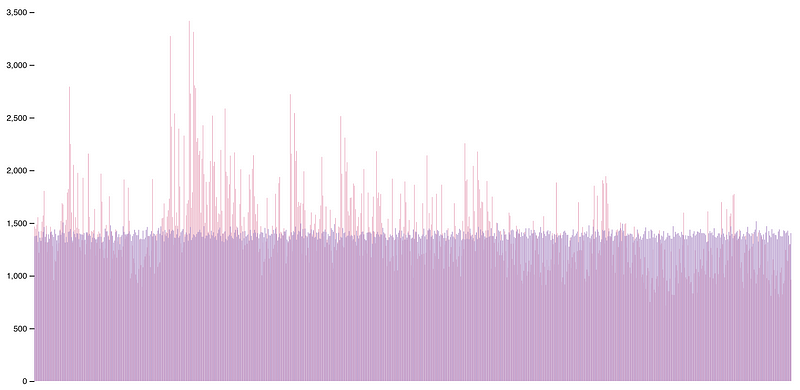131 private links
Hot take: YAML isn't a configuration language or a configuration language format, it's a serialization format. Is de-serializing some data structures the best way to configure a program? Maybe not. (Probably not. Mostly not.)
Like programming languages, all configuration systems communicate with both the computer and other people. But most are designed only for the computer to consume, not to be clear when people read it. De-serializing your live data structures is an extreme example of this.
In one of the breakthrough experiments, researchers at the University of Bristol’s Quantum Engineering Technology Labs (QET Labs) demonstrate the quantum teleportation of information between two programmable chip for the first time, which they remark is a cornerstone of quantum communications and quantum computing.
Quantum teleportation offers quantum state transfer of a quantum particle from one place to another by utilising entanglement. Teleportation is not only useful for quantum communication but is a fundamental building-block of optical quantum computing. Establishing an entangled communication link between two chips in the lab however has proven to be highly challenging.
“Each chip was then fully programmed to perform a range of demonstrations which utilise the entanglement.
“The flagship demonstration was a two-chip teleportation experiment, whereby the individual quantum state of a particle is transmitted across the two chips after a quantum measurement is performed. This measurement utilises the strange behaviour of quantum physics, which simultaneously collapses the entanglement link and transfers the particle state to another particle already on the receiver chip.”
Keyboard and Mouse re-invented! Keep your hands in typing position while moving the mouse. High speed Bluetooth + USB.
A new proof with important implications for game theory shows that no algorithm can possibly determine the winner.
In “The Danger of Naïvete,” Jeff Atwood explains that the reason the naive shuffle algorithm is biased (and fundamentally broken) is because it overshuffles the cards in the deck by selecting each card’s swap from the entire deck every time. This means that some cards are getting moved multiple times!
The image shows naive shuffle vs. Fisher-Yates shuffle, 1 million tries on a 6-item set. On the X axis there are the different possible final combinations, while the Y axis reports the count for each combination.

I’ve been programming for 15 years now. Recently our industry’s lack of care for efficiency, simplicity, and excellence started really getting to me, to the point of me getting depressed by my own career and the IT in general.
Modern cars work, let’s say for the sake of argument, at 98% of what’s physically possible with the current engine design. Modern buildings use just enough material to fulfill their function and stay safe under the given conditions. All planes converged to the optimal size/form/load and basically look the same.
Only in software, it’s fine if a program runs at 1% or even 0.01% of the possible performance. Everybody just seems to be ok with it. People are often even proud about how much inefficient it is, as in “why should we worry, computers are fast enough”...
Meta-data and Makefile needed to build the book. Main starting point. - SystemsApproach/book
L1 Terminal Fault/Foreshadow explained in ~three minutes For a more detailed technical view of L1 Terminal Fault, please see this deeper dive with Jon Masters.
Our New Year’s guide to hacker-friendly single board computers turned up 90 boards, ranging from powerful media playing rigs to power-sipping IoT platforms.
Community backed, open spec single board computers running Linux and Android sit at the intersection between the commercial embedded market and the open source maker community. Hacker boards also play a key role in developing the Internet of Things devices that will increasingly dominate our technology economy in the coming years, from home automation devices to industrial equipment to drones.
This year, we identified 90 boards that fit our relatively loose requirements for community-backed, open spec SBCs running Linux and/or Android. This is up from 81 boards in our similar catalog of hacker boards, posted June 1, which was followed later that month by a survey in which readers picked their favorite boards. A year ago in our New Year’s catalog we showcased 64 boards, up from 53, 40, and 32 entries in our previous reports.
Our annual winter round-up does not include a reader survey, which acts as a mid-year update, but below you will find individual summaries of all 90 SBCs with the most recent prices and updates. We also supply links to LinuxGizmos coverage and project websites, plus an extensive comparison table of major features of all 90 boards.
Free activities for classroom or home
CS Unplugged is a collection of free learning activities that teach Computer Science through engaging games and puzzles that use cards, string, crayons and lots of running around.
The activities introduce students to Computational Thinking through concepts such as binary numbers, algorithms and data compression, separated from the distractions and technical details of having to use computers. Importantly, no programming is required to engage with these ideas!
CS Unplugged is suitable for people of all ages, from elementary school to seniors, and from many countries and backgrounds. Unplugged has been used around the world for over twenty years, in classrooms, science centers, homes, and even for holiday events in a park!
The material is available free of charge, and is shared under a Creative Commons BY-NC-SA licence, which makes it easy to copy, adapt and share it.
Glossario Informatico Significato cosa vuol dire Definizione termine, sicurezza
SANTECH S.r.l. is a young and dynamic company specializing in the assembly of notebooks, founded by a group of entrepreneurs with the passion, extensive experience and a significant presence in the IT business.
